This was published 6 years ago
Trekking to Petra: Six days on the new Jordan Trail
A sky-blue lizard sprawls on a rock beside the track while griffon vultures spiral overhead, the only signs of life. Heat radiates up at us from the stony ground as well as blazing down from a cloudless sky. Whenever we stop walking, silence. There are few trees for the wind to sigh through. No villages or roads or rivers. Just this snapshot of spaciousness and solitude. Which is incredible because we're only three hours' drive from Amman, Jordan's capital, and this is only day one of the six-day Dana-Petra hike I'm on.
It's part of the new Jordan Trail, a 650-kilometre epic that opened this year in a new push by Jordan Tourism Board (JTB) to show there's more to the nation than Lawrence of Arabia landscapes, and to help tourism recover from its post-Arab Spring slump when visitor numbers dropped more than 60 per cent.
"We're trying to break the stereotype that equates Jordan only with Bedouin tribes, Petra and deserts," says Hakim Ahmad Al-Tamimi, head of JTB's Adventure Tourism Department.
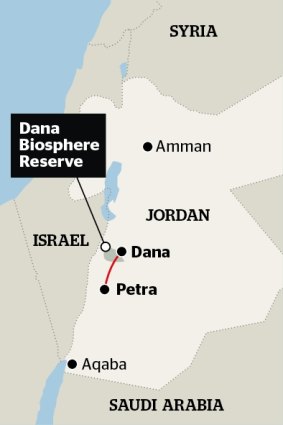
ADVENTURE POTENTIAL
For a small country – you can drive from one end to the other in six hours – Jordan is starting to have a big presence in adventure travel circles.
As well as the new hiking trail, a new long-distance mountain bike trail opened this year and there are new rock climbing areas, new ecolodges, more hiking trails. The Jordan Pass, launched in 2015, is helping visitors explore beyond well-known sites by offering free entry to more than 40 attractions nationwide. And the region's first adventure travel conference was held in Jordan this year. "Jordan is an invitation to adventure," said National Geographic Society explorer and guest speaker Andrew Evans at the first AdventureNEXT Near East, held on Jordan's Dead Sea coast in May. It was organised by the Seattle-based Adventure Travel Trade Association (ATTA), which plans to run in Jordan the 2018 event too, another vote of confidence in its adventure potential.
Jordan is also "a quiet house in a noisy neighbourhood", as ATTA director Shannon Stowell puts it, and safer than Germany and Britain according to the World Economic Forum's 2017 report. The Australian government's Smartraveller website agrees, advising only a "high degree of caution" for Jordan, the same advisory level as Morocco and France.
And while there might be metal detectors and armed guards outside shopping centres and hotels in Amman, safety becomes a non-issue when you're on the trail, replaced by a sense of discovery.
"It's not like the Himalayas," says our Experience Jordan guide Ayman Abd Alkareem on the drive from Amman to the start of our trek. Walking trails in Jordan might follow ancient trading and pilgrimage routes, he explains, but recreational walking is still new and trails remote and often unmarked.
BAPTISM OF FIRE
"It's going to be a little bit warm this week," Ayman says when we arrive in Dana, a 15th-century stone village clinging to a cliff edge 1200 metres above sea level. At first, the altitude insulates us from the unseasonal heatwave. Then we start our descent.
With every hairpin bend in the dusty road taking us into the belly of a windless canyon in Dana Biosphere Reserve, Jordan's largest nature reserve, the mercury rises, until it's nudging 40 degrees. It's the kind of heat that makes you wonder if you'll ever feel cool again.
The landscape does its best to distract us with its sci-fi beauty; Ridley Scott has shot three of his movies in Jordan, including The Martian, and Jordan's Royal Film Commission launched its first "film tourism" campaign in August, to attract visitors through cinema.
Our accommodation that night could be a movie set, actually. Feynan Ecolodge, a two-storey, sand-coloured earthship, was Jordan's first ecolodge when it opened in 2005.
Inside, nature's furnace is forgotten. Men in white welcome us with tall glasses of lemon and mint juice and chilled towels to wipe our faces before showing us to our rooms. Mine is simply cool serenity – polished earth floor, mosquito-netted bed, no technology – but after a quick shower I'm outside again, joining my friends for a short sunset walk, a Feynan ritual. It's worth the effort: all is still and timeless as the sun lowers itself into the hazy horizon, taking the day's heat with it.
Wandering back to the lodge, we find it glowing like a small ship at sea. The property is off grid, run according to strict sustainability principles to minimise its impact on the environment and maximise benefits to the 80 Bedouin families who live nearby (by employing all Bedouin staff, for instance).
There are solar panels but no electric lights; instead more than 200 hand-made candles transform the lodge each night. That means dinner by candlelight on the terrace followed by stargazing with a telescope on the lodge's flat roof until none of us can keep our eyes open any longer.
MOUNTAINS MADE FOR HIKING
The next morning, the prospect of rougher terrain and a longer day (we average five to seven hours of walking a day) persuades half our group to linger over their coffees at Feynan, do a few short walks and travel by road to camp that afternoon.
This only ups the adventure for the four of us who walk on, and it turns out to be one of the best days of the trek.
The scenery is even more cinematic than the previous day, the trail zigzagging into canyons, skirting bottomless gorges and taking us up and over great swells of earth. There are wind-sculpted gargoyles, sulphur-yellow rocks underfoot and fossils of long-gone marine creatures, petrified postcards from millions of years ago.
The heat feels intense, particularly during the steep climbs and because we're each carrying four or five litres of water. But there are plenty of stops: to rest in the shade of occasional juniper trees, spreading our red-and-white Jordanian shemaghs on the ground like picnic blankets, and to "drink more water" (Ayman's mantra; he also adds electrolytes to our water bottles). And we have a support donkey today, called Marzooq ("Blessed" in Arabic), loaded with extra water.
Late that afternoon we meet the others at our high wilderness campsite: a row of tents, a canvas kitchen and a shower stall (for bucket showers to wash off the dust) set up by our Bedouin support crew, who transport our luggage between camps in their utes.
As the sun sets, we hear a muezzin's call carried on the wind from a distant mosque, candles in paper bags flicker outside our tents (who needs torches?) and Ayman produces a few bottles of Jordan River cabernet sauvignon for us to have with dinner: chicken roasted over a juniper-wood fire.
Far below our eyrie, village lights flicker like earthbound stars. Beyond them, no more than 20 kilometres away but invisible in the gathering darkness, lies Israel, locating us on the world map again.
BEDOUIN ENCOUNTERS
The only other tourists we see all week are a bunch of European cyclists who pass us in a blur of lycra and waving. Not that we're completely alone. Sometimes we don't see the Bedouins living in the landscape until we're almost upon them. We're not allowed to take photos, but we get something better: the chance to interact, practising simple Arabic words and phrases Ayman has taught us, like keef halak (how are you?) and shu ismak (what's your name?).
One day it's an elderly woman in head-to-toe black standing with a gaggle of grandchildren outside her dark goat-hair tent. The next it's a camel herder all in white with a red shemagh on his head and a pack of Gold Coast cigarettes showing through his shirt pocket.
Stopping to chat is important, says Ayman, immersing us in our surroundings and enhancing the experience, on both sides: "The kids grow up seeing that people walk for pleasure, and it's nice to walk in an area where people like you and are welcoming."
Then there's the man called Springtime Christmas (Rabir Eid in Arabic) selling souvenir camel mugs and antique-looking jewellery from his thatched shop at the edge of a cliff. He has 10 children and three grandchildren, he tells us, before playing a mournful song on his rabab, a goatskin violin. When it's time to leave, he shakes hands with each of us then holds his hand to his heart, a gesture that never fails to touch mine.
PETRA BY THE BACK DOOR
Every day we see evidence of civilisations past. A Christian monastery crumbling into the rock it was built from 2000 years ago, green-lipped caves where Romans mined copper about 350BC, an Islamic military lookout (Islam came to Jordan in 636AD) – pieces of a historical jigsaw we try to make sense of, with Ayman's help; he studied archaeology before becoming a guide.
But day five brings what we've all been waiting for – the chance to walk into Petra by the "back door" in its north-western corner.
A small ticket office is the only sign we're close; there are no gates this side, no other tourists. We show our Jordan Passes and keep walking, past dusk-pink sandstone walls until, quite suddenly, we're standing in front of the Monastery (Al Deir), craning our necks to take in the 50-metre-high facade of Petra's largest monument, which seems to grow out of the vertical rock face. The transition from wilderness to World Heritage is that seamless.
It's an Indiana Jones moment if ever there was one, but not the end of our hike. Not yet.
So much surprises me about Petra. It's quieter than I'd imagined, particularly around the Monastery, which is a long hike up 800 steps from Petra's main trail.
It's massive: more than 250 square kilometres of aqueducts, avenues and a Roman amphitheatre carved from solid rock. Speaking of aqueducts, it's a hydrological marvel: the Nabateans built dams and pipes to collect and transport rain and springwater around the city they called Rakem (the Romans called it Petra from the Greek word for "rock" when they took over in AD106).
And most of the monuments are tombs; the Nabateans spent their lives, and their fortunes, preparing for eternal life after death. Petra might have been home to 30,000 people but their simple dwellings are long gone, destroyed by three major earthquakes, the last in 1749. Much of the site remains buried, in fact; it's estimated that only 30 per cent of it has been excavated.
ADVENTURE IN PETRA
It's also an incredible natural landscape with canyons, caves and rock walls just as impressive as the monuments. We scramble and rock-hop to high ledges for vulture views, trek across sun-baked plains and, that afternoon, follow a dry canyon back to Petra's main entrance, using our hands and feet to negotiate Wadi Mudlum's sandstone curves, passing blushing bushes of oleander and hurrying under logs stranded 10 metres overhead by flooding winter rains.
After a night at a hotel in Wadi Musa, the town that sprawls downhill to Petra Archaeological Park, as it's officially called, we return the next morning, following the main tourist trail through the Siq, a narrow gorge barely three metres wide.
Even there we see few other tourists, making that first slender glimpse of the Treasury (Al Khazneh), the monument synonymous with Petra, sublime. It's just as Swiss explorer Johann Burkhardt would have seen it in 1812, inspiring him to bring this "lost" city to the non-Arab world's attention.
Three decades later, in 1845, English poet John William Burgon wrote:
"From the rock as if by magic grown, eternal, silent, beautiful, alone ... A rose-red city half as old as time."
Petra still feels like this: earthy and ethereal, a message from another time.
Too soon, we have to leave. But as we turn our backs on the Treasury, re-enter the Siq and start strolling back to Petra's main entrance, Ayman stops us. "Guys, turn around," he says. "Take one last look, just for yourselves, without your cameras." There's nothing like it, this sliver of beauty and intrigue between dark walls, like a secret waiting to be shared.
TRIP NOTES
FLY
Emirates flies to Amman via Dubai from Sydney, Melbourne, Brisbane, Adelaide and Perth. See emirates.com/au
Tourist visas on arrival cost 40 Jordanian dinar (about $70); travel with a Jordanian tour operator and the fee is waived. Or buy a Jordan Pass before you go; they cost JD70-80 and cover your visa fee and entry to more than 40 attractions, including Petra where a one-day pass usually costs JD50. See jordanpass.jo
TREK
Experience Jordan, based in Amman, runs seven-night Dana-to-Petra treks starting at $US1600 a person including all meals and accommodation (hotels and wilderness campsites, all gear provided) and Petra entrance fees. The best time to go is February-May or October-December. Experience Jordan also run treks on the entire Jordan Trail. See experiencejordan.com
MORE
Louise Southerden was a guest of Experience Jordan, Feynan Ecolodge, Jordan Tourism Board and the Adventure Travel Trade Association.
FIVE MORE WAYS TO ADVENTURE IN JORDAN
BIKE ACROSS JORDAN
The 720-kilometre Jordan Bike Trail, shadowing the Jordan Trail hike in some parts, opened in May. Experience Jordan runs 12-day mountain bike trips along it with stops at Petra, the Dead Sea and Aqaba. See jordanbiketrail.com
ROCK CLIMB WADI RUM
Rock climbing isn't allowed in Petra but there are climbing routes on the sandstone walls of Wadi Rum in southern Jordan, and new rock climbing routes in northern Jordan. See bedouinguides.com
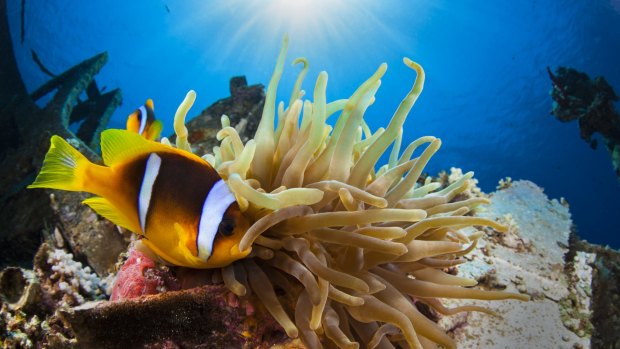
Credit: Shutterstock
DIVE THE RED SEA
Coral reefs and whale sharks might not spring to mind when you think of Jordan but you can see both on diving and snorkelling trips from Aqaba, Jordan's only coastal city and just four hours from Amman. See diveaqaba.com
DO A DESERT SAFARI
Shaumari Wildlife Reserve in eastern Jordan was established in 1975 to breed endangered wildlife and recently reopened; it now runs jeep tours to see herds of Arabian antelope-like oryx, ostriches and Persian onagers (wild asses). See wildjordan.com
GO CANYONING
On the east coast of the Dead Sea lies Mujib, the lowest nature reserve in the world, 410 metres below sea level, where you can hike "water trails" up waterfalls and through spring-fed pools April-October. See wildjordan.com
FIVE MORE EPIC TREKS IN THE MIDDLE EAST
MASAR IBRAHIM (ABRAHAM PATH), PALESTINIAN TERRITORIES
This 330-kilometre "cultural walking route" passes through 53 towns and villages on its journey through the West Bank from the Mediterranean to the Palestinian Territories' southern deserts. It'll take 18 days or you can do day walks and one-week hikes. See masaribrahim.ps/en/
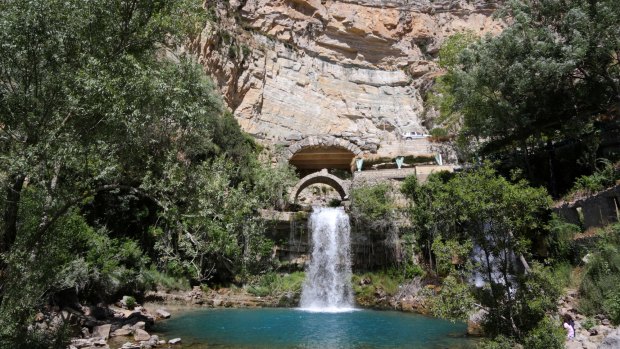
Credit: Shutterstock
LEBANON MOUNTAIN TRAIL
Inspired by the Appalachian Trail, this 470-kilometre track was established 10 years ago by the Lebanon Mountain Trail Association to help small communities and preserve their culture. The LMTA runs 16-day treks in April and October. Or hike it in sections (there are 27 day walks, each nine-24 kilometres) in either direction, self-guided or with a local eco-tour operator. See lebanontrail.org
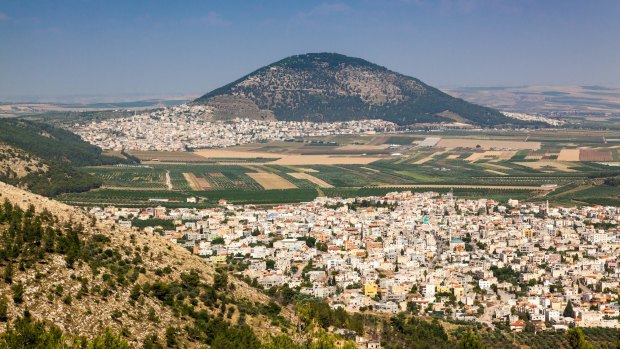
Credit: Shutterstock
ISRAEL NATIONAL TRAIL
This 1100-kilometre trail stretches from the Lebanese border south to the Gulf of Aqaba, from snow to desert to Red Sea, via kibbutzim where you can buy supplies, and has Trail Angels offering trekkers meals and beds for the night. See israeltrail.net
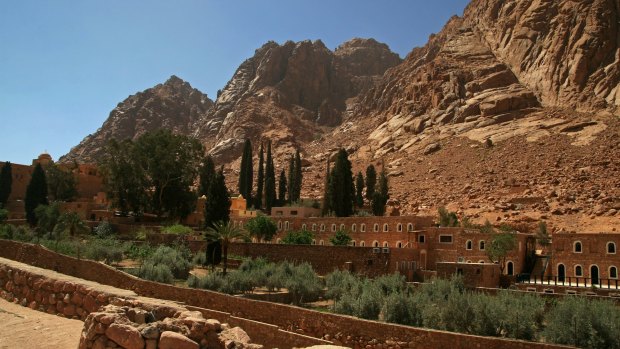
Credit: Shutterstock
SINAI TRAIL, EGYPT
Bedouin guides from three tribes built this 250-kilometre Red Sea-to-summit route that starts at the Gulf of Aqaba and ends in the highlands of St Katherine, the "roof of Egypt", taking 14 days end to end. See sinaitrail.org
THE JESUS TRAIL, ISRAEL
The Camino de Santiago of the Middle East travels 65 kilometres from Nazareth to Capernaum on the Sea of Galilee, connecting villages and religious and cultural sites, with accommodation in guesthouses en route. See jesustrail.com
Sign up for the Traveller Deals newsletter
Get exclusive travel deals delivered straight to your inbox. Sign up now.